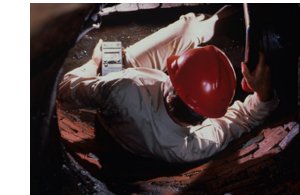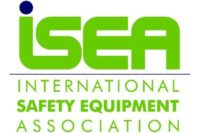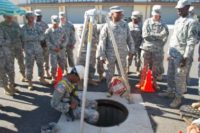 Training both workers and supervisors to recognize and anticipate hazards and perform rescues is vital, according to a panel of confined space experts speaking at the International Safety Equipment Association's (ISEA) Washington Roundtable earlier this month.
Training both workers and supervisors to recognize and anticipate hazards and perform rescues is vital, according to a panel of confined space experts speaking at the International Safety Equipment Association's (ISEA) Washington Roundtable earlier this month.
The panel, which included safety professionals, regulators and PPE manufacturers, also identified potential weak links in a confined space safety program: complacency, improper identification of confined space hazards, failure to prepare for entry by testing and monitoring, and generic training that does not provide hands-on experience were all cited as potential weak links in a safety program.
Panelists noted that some employers and workers do not even realize that they have a confined space, and fail to take the necessary steps to work safely.
Training must not only be given to workers, but also supervisors and rescue teams who may be called on to extract a disabled worker. Supervisors should be trained to the of competency level each worker, and training should be conducted on-site as well as in the classroom.
Many of the fatalities in confined spaces are rescuers, who were improperly prepared or equipped. Panelists reminded the audience that everyone involved in confined space work is a potential rescuer, not just emergency responders or designated rescue teams.
Gas detection best practices
Panelists reviewed best practices in verifying the operation of gas detection instruments which are used to monitor confined space atmospheres and alert workers to dangerous conditions. Daily "bump" testing, using the right test gas and ensuring that it is fresh, and sampling the confined space with ventilators turned off were among the best practices noted.
Making confined space ID part of licensing
Asked how to increase awareness of confined space safety, panelists suggested working through industry associations and insurers, and possibly making identification of confined spaces - and preparation for them - part of the business licensing process.
ISEA sponsored the roundtable as a way to examine regulations, best practices and the use of personal protective equipment in confined spaces. Panelists included James Thornton, health and safety director for Newport News Shipbuilding and Donald Raffo, marine chemist for General Dynamics Electric Boat division; OSHA enforcement official Sherman Williamson; chemical and maritime specialist Lawrence Russell from the National Fire Protection Association, and ISEA members Rick Graham of MSA, Brent Kleven of Scott Safety and Trent Smith of Honeywell Analytics. All the panelists have extensive experience in confined space safety and health.
The Washington Roundtable was a project of the ISEA Marketing and Communications Committee, to help company marketing personnel and other equipment specialists, as well as representatives of user groups, stay up to date on the latest developments in a particular area of occupational safety and health.



